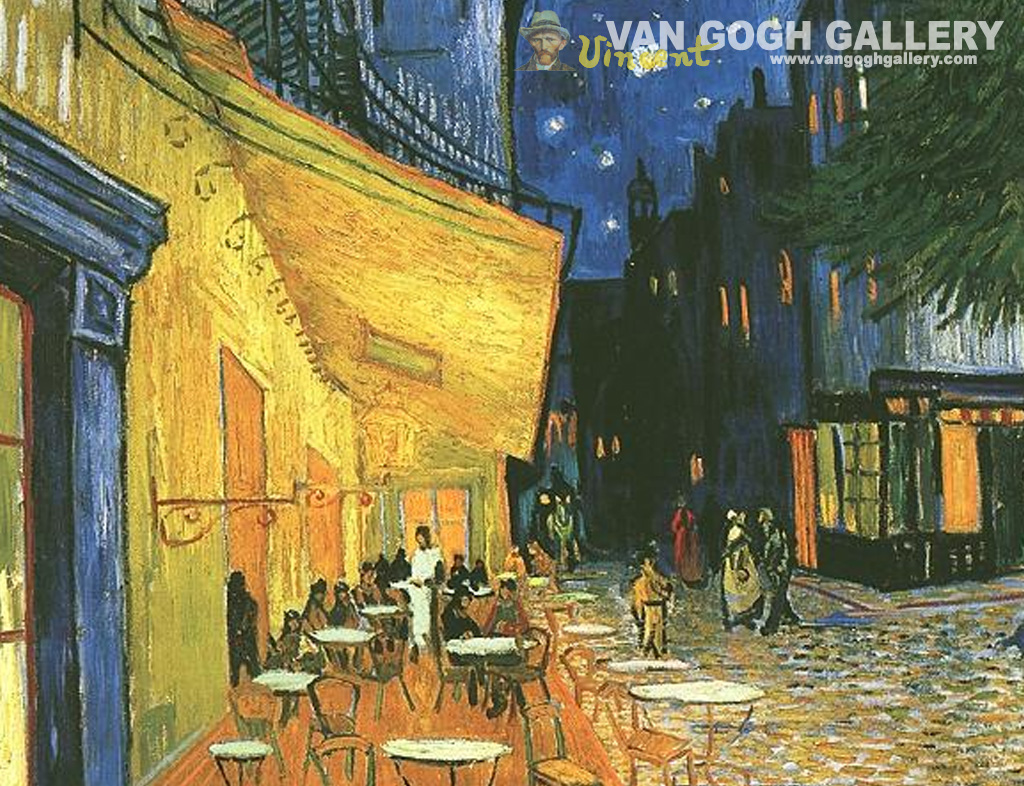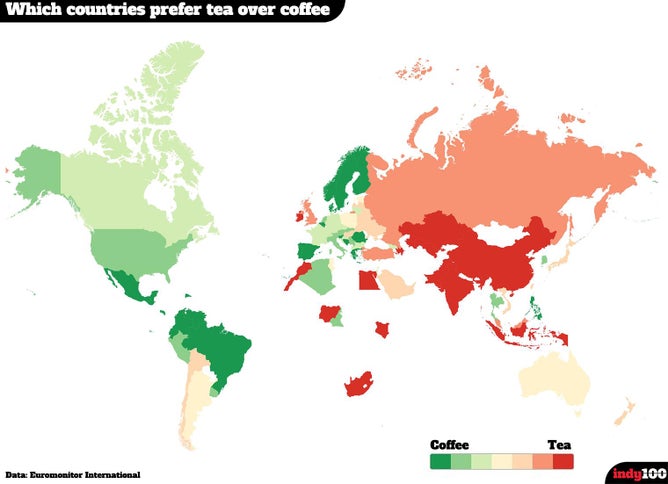Continuing the entry from Wednesday...read the first part here.
 |
| Credit |
The
Oxford students took coffee to London as well, where coffeehouses gained
widespread popularity as Penny Universities because all kinds of subjects were
discussed by men from all walks of life. No women allowed in though. The ladies
soon set up a petition – complaining that coffee decreased their men’s
virility. Men fired back a vigorous and somewhat explicit rejoinder.
A
Turkish ambassador to the French court took coffee to France, where they
developed a serious passion for it. The Dutch broke the Muslim monopoly on
coffee, and ever the canny businessmen, went on to greatly influence the
European coffee trade. The spoils of war brought a sack of coffee beans to
Vienna in the 1680’s. And so the craving for coffee spread through the cities
in Europe.
Incidentally,
tea came to Europe at about the same time and was sold through the coffee
houses but did not become popular till the 18th century, when
Britain established tea plantations in the colonies. The British thrust on tea
eroded the coffee market in Arabia, as Arabs became tea drinkers. Even
today, the erstwhile British colonies are the largest consumers of tea. Continental
Europe and Americas however remain coffee strongholds.
***
Fun fact - in 1668,
coffee overtook beer as a breakfast drink in New York. The Dutch had been
eclipsed by the British in NYC by then, but remained paramount in the world
trade. And across the pond, the Dutch masters were well into the Dutch Golden
Age. In 1668, the same year when New Yorkers found coffee goes better with their breakfast bacon, Jan Steen painted his Twelfth Night Feast.
In the 17th
century, the sky in night scenes, or Nocturnes, was painted differently –
darker, drabber, certainly more static. It was much darker
outdoors in Europe during the 17th century than in Van Gogh’s time. Paris, for instance,
got the first
gas lit street in 1820’s, London a few years earlier. Prior to that, city streets were mostly unlit,
though there were regulations about mandatory lights in streetside windows of
surrounding houses. Citizens carried their own lights when moving around in the
dark.
The
introduction of street lighting in the 19th century had much to do
with the colour palette we see in Van Gogh’s nocturnes. However, Van Gogh’s
early paintings were darker and his use of colour was less bold. It was only
after Paris his work grew brighter as he came into contact with older artists
like Claude Monet and Paul Gauguin. Japanese woodcuts also influenced Van Gogh’s
palette and his paintings got a lighter, more modern vibe. And of course, that Van Gogh was born in the century when the collapsible tube was invented, as were newer, synthetic pigments, had an overarching impact on his palette and his open air painting technique, which he employed in capturing the cafe at Place du Forum at Arles.
Now there’s
a painting of night without black. With nothing but beautiful blue, violet and
green, and in these surroundings the lighted square is coloured pale sulphur,
lemon green.
Letter
to Willemien Van Gogh dated 8th-14th Sept, 1888 from
Arles.
Café Terrace by Night
(1888) was one of a trilogy of nocturnes painted by Van Gogh, Starry Night over
the Rhone (1888) and Starry Night (1889) being the other two. Starry Night was acquired
by MoMA in 1921 and hangs there still, while SNotR is now located at Musee d’Orsay. CTbN itself is displayed at the
Kroller-Muller Museum some 80 odd kms from Amsterdam. According to some sources,
CTbN is among the ten most popular of
his paintings/reproductions. I can easily believe that – one of its reprints
hung in my rooms in the 90s when I first came to Bahrain.
It
is a luminous painting, remarkably vivid as all his later paintings are, and it’s
reminiscent of some intriguing religious imagery. There is a faint cross behind the
standing figure of the long haired man, and it is surrounded by 11 seated
people, with one shadowy figure exiting through the doorway in the left - a
possible Judas to a white robed Jesus standing under an impending cross? Some
scholars think it is a nod to Da Vinci’s Last Supper. Though Van Gogh himself
never mentioned any religious takes when he wrote about the CTbN to his sister. On the other hand, he wrote, at about the same time to his brother Theo - that he "had a tremendous need for religion." Van Gogh had wanted to be a clergyman once, so it is not too far fetched to imagine a riff on the Last Supper.
Van
Gogh was also a regular at cafés – he lived in them, he ate and drank in them, he
painted them, he exhibited his paintings in them, he maintained close
friendships with some café owners even after he left the city in which they
were located. He painted at least one still life of a coffee pot, two café
tables, and one portrait of a man drinking coffee that I am aware of. After he
cut off his ear in Arles, the physician who treated Van Gogh, Dr Felix Rey,
thought that Vincent had epilepsy brought on by too much alcohol and coffee and
too little food. That he drank
prodigious amounts of absinthe and coffee is beyond any doubt. He also nibbled
on paints and drank turpentine, which could not have done his health much good.
There
are theories about how absinthe affects the perception of yellow in the vision
and whether Van Gogh’s fluorescent palette came about from his drinking. He was
a tortured, lonely soul, that too is beyond doubt. His paintings are a
celebration of colour, nature and living, strangely juxtaposed with his own
despair, loneliness, mental health issues and ultimate suicide. How could someone who was so unhappy pour out such a happy mix of colours? Spark such
a feel good vibe in his viewers? The questions remain even 130 years after his death.
***
***
I could have told you instead about my own teeny-tiny Van Gogh chronology – read his
biography as a teenager, tracked him down at the museum in Amsterdam and
then at Musée d’Orsay, hung his sunflowers on my walls. Or about my fanhood of his letters, now available online, almost the
entire correspondence. How the Starry Night eluded me by
just a few meagre weeks. But never mind, that's not one hundredth as fascinating.


Thank you for this.
ReplyDeleteHuge thanks.
As a memoir/diaries/letters addict I am not certain that your final paragraph is entirely truthful though. I have found that letters from 'ordinary people' (is there any such thing) are at least as educatative and fascinating as those of their better known peers.
I do find journals/letters of all sorts interesting too. I never kept a journal so the memoirs I write are totally based on my current recollection, unsupported by any recorded feelings/events of the time. That makes it a little less fascinating imo :)
DeleteThank you Nila. Like me, you don't want to be done with van Gogh. Loved this. I have things in common with van Gogh - I'm also a regular at cafés – I live in them, eat and drink in them. Where he painted in them, I write in them. When I travel, I always find a cafe which I feel is simpatico to my needs. Thank you French people, for without you we would have waited much longer for the invention of the cafe.
ReplyDeleteYa, can't be done with Van Gogh ever.
DeleteHi Nila - it's fascinating how we're still influenced by the artists of the 19th century and are still learning so much from them. One doesn't know what affects the brain ... but we're learning - and where synesthesia comes in ... 'drugs' must affect our brain so much.
ReplyDeleteLove the extra quotes you've given us re the descriptions of the 'no black' starry, starry night ... and our own colour perception ...
Tea v coffee ... each snippet - really interesting and I love your memories and ideas - thank you for always writing interesting thought-provoking posts ... cheers Hilary
We are so lucky to have the modern tools for 'seeing' into things and that we can learn so much from carbon dating and scanning old artworks. Never fails to amaze!
DeleteVan Gogh groupies unite. Certainly a unique tortured soul. I'm just not a coffee drinker - I'd rather have a breakfast beer I think. Or I'll stick with my nice orange juice. No absinthe here, though it seems rather cool and artsy.
ReplyDeleteAnd frankly, whatever you write is of interest, so feel free to do more Van Gogh postings.
I thinks I'd stick to orange juice too. Breakfast is too early for an alcoholic drink for me! I've tried ouzo but not absinthe...must remedy that. Van Gogh is an unending subject, and I'm quite obsessed with the man.
DeleteBeer was a breakfast drink? Wow.
ReplyDeleteIronically, I drink neither coffee nor tea. Just not my thing.
Beer/ale is the oldest beverage recipe of which there is archaeological evidence. And it was preferred to water for a long time as water was often contaminated. We take clean drinking water for granted now, but the first municipal water purifying plants did not happen till 1800 or so, amazing or what?
Delete